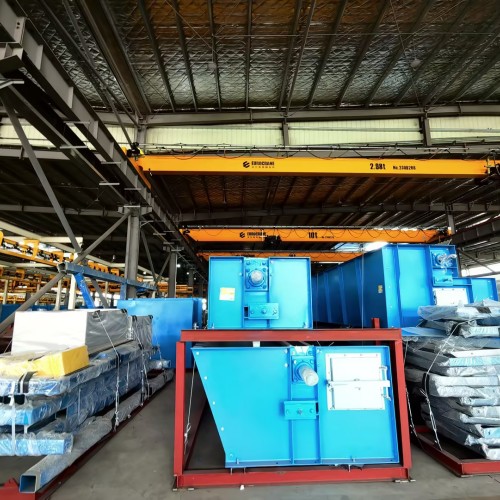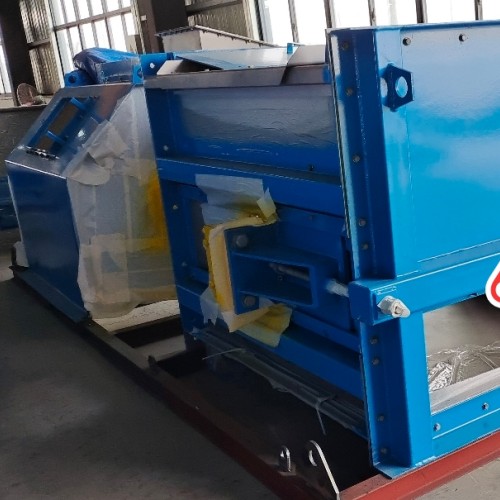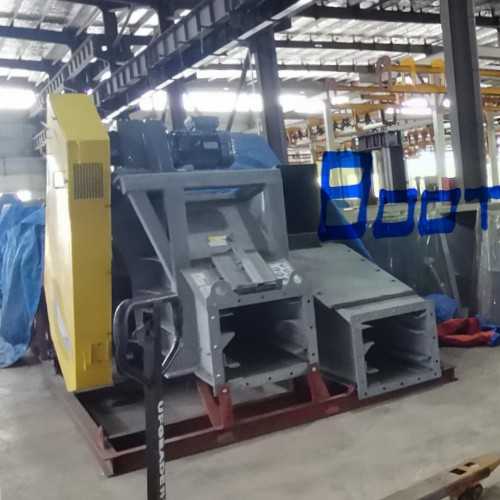
Fly Ash Conveyors and Bottom Ash Conveyors
Fly Ash Conveyors and Bottom Ash Conveyors
Fly ash and bottom ash conveyors are critical components of ash handling systems, ensuring the efficient transport of ash generated during combustion processes in power plants, waste-to-energy facilities, and biomass plants. These conveyors help manage ash safely, effectively, and in an environmentally compliant manner.
Fly Ash Conveyors
Fly ash conveyors are specifically designed to handle the fine, powdery residue collected from flue gas filtration systems like baghouses or electrostatic precipitators (ESPs).
Key Features of Fly Ash Conveyors
- Enclosed Design
- Prevents spillage and minimizes dust emissions for clean, safe operation.
- Fully enclosed systems help comply with environmental regulations.
- Pneumatic Conveying Systems
- Dilute Phase Conveying: High-speed air carries lightweight fly ash over long distances.
- Dense Phase Conveying: Low velocity, high-pressure air is used for energy-efficient transport of abrasive or heavier fly ash.
- Benefits:
- Long-distance transport capability.
- Flexible pipeline routing to fit plant layouts.
- Screw Conveyors
- Common for short distances, such as from hoppers to storage silos.
- Compact, cost-effective, and reliable for smaller operations.
- Belt Conveyors with Covers
- Used for moving fly ash over medium distances.
- Includes a covered belt to prevent spillage and dust.
Applications of Fly Ash Conveyors
- Transporting fly ash from ESPs or baghouses to storage silos.
- Conveying fly ash for reuse in cement production, concrete additives, or other industrial applications.
Bottom Ash Conveyors
Bottom ash is heavier and coarser than fly ash and collects at the bottom of the furnace or boiler during combustion. Bottom ash conveyors are designed to handle these dense materials efficiently, often incorporating features for cooling and quenching.
Types of Bottom Ash Conveyors
- Submerged Scraper Conveyors (SSC)
- How It Works: A chain-driven scraper moves ash along the bottom of a water-filled trough to cool and quench the hot ash.
- Benefits:
- Handles high-temperature ash directly from the boiler.
- Reduces dust and environmental impact.
- Compact design for limited space installations.
- Dry Ash Conveyors
- Used for dry handling of bottom ash to eliminate the need for water.
- Includes cooling zones or air-cooled systems for ash handling without quenching.
- Advantages:
- Reduces water usage and eliminates ash pond requirements.
- Minimizes environmental concerns related to wet ash handling.
- Drag Chain Conveyors
- Uses heavy-duty chains and flights to drag ash through an enclosed trough.
- Suitable for coarse or abrasive ash.
- Can transport ash horizontally or at an incline.
- Belt Conveyors
- Designed for coarse ash transport over medium-to-long distances.
- Can be fitted with hoppers, covers, and dust control features.
Key Features of Bottom Ash Conveyors
- Durable Construction
- Built with wear-resistant materials to handle abrasive and high-temperature ash.
- Heavy-duty chains and flights for longevity.
- Cooling Capabilities
- Submerged conveyors cool ash using water, while dry systems utilize air or cooling plates.
- Dust Control
- Enclosed designs prevent spillage and dust emissions.
- High-Temperature Resistance
- Capable of handling ash at temperatures exceeding 1,000°C (1,832°F).
Applications of Bottom Ash Conveyors
- Transporting ash from furnaces, boilers, or incinerators to disposal areas or silos.
- Used in coal-fired power plants, biomass power plants, and waste-to-energy facilities.
- Conveying ash for reuse in applications like road construction or cement production.
Comparison of Fly Ash and Bottom Ash Conveyors
| Feature | Fly Ash Conveyors | Bottom Ash Conveyors |
|---|---|---|
| Material | Fine, powdery ash | Coarse, abrasive, and high-temperature ash |
| Common Type | Pneumatic systems, screw conveyors | Submerged scrapers, drag chain conveyors |
| Cooling | Not required | Required for high-temperature ash |
| Dust Control | Enclosed design | Enclosed or submerged for dust control |
| Transport Distance | Long distances via pneumatic pipelines | Short to medium distances |
Benefits of Integrated Ash Conveyor Systems
- Efficiency
- Handles large volumes of ash continuously, reducing manual intervention.
- Environmental Compliance
- Dust-free, enclosed systems ensure safe and clean operations, meeting stringent regulations.
- Cost Savings
- Minimizes labor and maintenance costs through automation and robust design.
- Flexibility
- Customizable systems can accommodate diverse plant layouts and process requirements.
- Sustainability
- Enables ash reuse, such as in cement and road construction, promoting circular economy practices.
Conclusion
Fly ash and bottom ash conveyors are critical for the safe, efficient, and eco-friendly handling of ash in industrial operations. Whether you need a pneumatic system for fine fly ash or a submerged scraper conveyor for heavy bottom ash, these systems ensure continuous operation, environmental compliance, and reduced operational costs.
Would you like detailed specifications, a design consultation, or assistance in selecting the right ash conveyor system for your facility?






